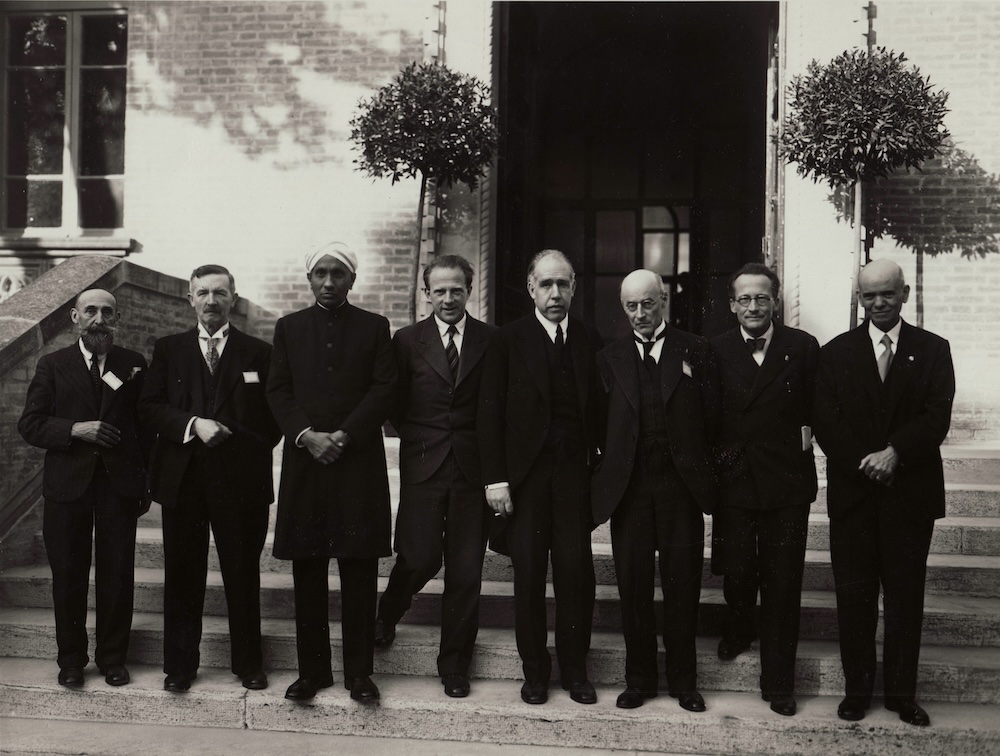Sofia Guilhem Basilio
Erwin Schrödinger and Acausality

Opening of the Galvanian Celebrations (Congress of Physics, Radiobiology and Biology) at the Istituto di Fisica Augusto Righi, Università degli studi di Bologna, 19 October 1937. From left to right: Albert Turpain, Aimé Cotton, Sir Chandrasekhara Venkata Raman, Werner Heisenberg, Niels Bohr, Owen Willans Richardson, Erwin Schrödinger, Quirino Majorana.
Erwin Schrödinger is a fascinating figure in the history of quantum mechanics. While he is best known for his formulation of wave mechanics and his famous cat paradox, his influence is much broader. Throughout his life, Schrödinger worked across diverse fields of physical research, such as color theory, acoustics, gravitation, magnetism, and, of course, the nature of the quantum world. This attitude of exploring many different fields extended beyond physics. He devoted considerable time to studying Western philosophers such as Kant and Schopenhauer, and also filled notebooks with reflections on Indian philosophy and religion, including Vedanta, consciousness, moral law, and Samkhya.
Given this vast pool of intellectual references, it is not surprising that Schrödinger had a distinct worldview. My project aims at examining in depth Schrödinger’s nuanced understanding of one specific concept: causality. Most research on the interpretational debates between Schrödinger and Copenhagen physicists begins by examining the equivalence between Schrödinger’s wave mechanics and Heisenberg’s matrix mechanics in 1926. This project looks at an earlier period: I want to understand how Schrödinger’s notion of causality emerged already before quantum mechanics and which role it played in the development of wave mechanics, with particular emphasis on the years between 1918 and 1926.
In the face of this multitude of inspirations, I argue that Schrödinger adopted partial commitments to his various philosophical influences: epistemologically, he would go one way; ontologically, he favored another; and methodologically yet another, third way of looking at the world. A notable example of this framework is Schrödinger’s reception of the 1924 Bohr-Kramers-Slater theory: He embraced the epistemic abandonment of causality, but the concept of virtual fields did not align with his methodological perspective. To better understand Schrödinger’s interpretation of causality, my project relies on a vast array of primary sources from the Niels Bohr Archive and elsewhere, including letters, personal notebooks, and published works.
